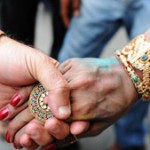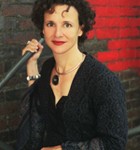Shari Dworkin and I are happy to introduce our first official guest post, from Adina Nack, Associate Professor of Sociology at California Lutheran University:
———-
By Adina Nack
What are the overt and covert goals of school dress codes? Are these dress codes developed to ensure that students meet norms of professionalism, or do these serve as tools for schools to enforce heteronormativity and stigmatize transgenderism? Are schools citing safety concerns, warning parents about how to protect youth from harm, or do these intend to distract us from the ways in which dress codes serve to reinforce heterosexist norms? How well can we predict the unintended consequences of dress codes – both the more ‘traditional’ and more ‘progressive’ policies?
These are the questions I found myself asking after reading Shari Dworkin’s recent post about Morehouse College’s dress code and a recent New York Times article by Jan Hoffman that asked, “Can a boy wear a skirt to school?”: (see High Schools Struggle When Gender Bends the Dress Code).
 This NYT piece focused on the number of U.S. high schools who have created dress codes that explicitly classify “unconventional gender expression” as violations warranting disciplinary actions. Hoffman also mentioned some high schools whose dress codes are more accepting of “gender-blurring clothing.” Hoffman’s recent NYT article includes arguments for and against dress codes that allow for a diverse range of gender and sexuality expressions, noting safety as “a critical concern.”
This NYT piece focused on the number of U.S. high schools who have created dress codes that explicitly classify “unconventional gender expression” as violations warranting disciplinary actions. Hoffman also mentioned some high schools whose dress codes are more accepting of “gender-blurring clothing.” Hoffman’s recent NYT article includes arguments for and against dress codes that allow for a diverse range of gender and sexuality expressions, noting safety as “a critical concern.”
To exemplify this point, Hoffman mentions Lawrence King’s 2008 murder. Living and teaching near Oxnard, CA, I had immersed myself in the news coverage of this school shooting. Journalists often discussed King as a 15-year-old student who sometimes cross-dressed and who had talked about being gay. For example, Ramin Setoobeh’s 2008 coverage of King’s story in Newsweek included detailed descriptions of the clothing, make-up, and accessories that the 15-year-old often wore to school. At the time of the murder, many local residents – ranging from the socially conservative to the socially progressive – were shocked when reports revealed that King had been allowed to ‘cross-dress’ at his middle school. According to MSNBC, his school’s leniency became the reason for Lawrence King’s family to file a personal injury claim against the school district: “for not enforcing the dress code.”
When it comes to questions of school safety, it is not appropriate to posit any dress code as the solution. Blaming a school – for having a “lenient” dress code or for not enforcing a dress code – is a simplistic and unjust conclusion to reach. Following this line of reasoning, we should not question a dress code which privileges a narrow definition of masculinity. Codes and policies rooted in social inequalities serve to elevate oppressive norms – we can and should be critical consumers.
In an SWS listserv discussion inspired by last week’s NYT article, sociologist Joan I. Biddle, raised interesting points that illustrate why a context-sensitive analysis is key. I followed up with her by email, and she clarified her perspective:
“The degree to which the faculty become involved with these students may have a lot to do with how the student behaves at school. Is the student doing things which disrupt the learning of other students? Also, how does the student present her/himself to the others in the school setting? And, is this presentation compatible with the flow of things in the social/educational environment at the school?”
Several questions arise here: How does heteronormativity influence teachers’ and administrators’ definitions of ‘disruptive’ behavior? Do longstanding stereotypes about homosexual males – as those who seek to ‘convert’ heterosexuals or as supposed perpetrators of sexual crimes – make it more likely for a cross-dressing male student to be labeled as deviant and aggressive?
Biddle’s point about the social significance of a student being perceived as ‘disruptive’ is illustrated by a line in Setoobeh’s article about King’s murder: “Larry King was, admittedly, a problematical test case: he was a troubled child who flaunted his sexuality and wielded it like a weapon—it was often his first line of defense.” In U.S. schools, are heterosexual students ever accused of ‘flaunting’ their sexuality? Are heterosexual boys who flirt with girls likely to be cited for having used their sexuality as a weapon? Setoobeh’s use of a ‘sexuality-as-weapon’ metaphor likely referred to reports of King being accused of ‘sexually harassing’ several male students, including the student who ultimately killed him. However, framing King as the one wielding “a weapon” distracts from how we problematize any sexual agency on the part of minority sexualities and the numerous reports about King having been the victim of homophobic bullying.
A year and a half after this tragedy, mainstream media coverage of school dress codes fails to bring sufficient attention to underlying inequalities reinforced by these institutional policies which codify heterosexism. If we want to focus on safety concerns, then what about holding all U.S. schools accountable for not allowing any type of bullying or sexual harassment to take place on their campuses? Reframing the social problem in this way would require a nationwide crackdown on the most prevalent and normalized type of sexual harassment – that of boys/men harassing girls/women. We would also have to address the far too common harassment and bullying of LGBTQ students, heterosexual female students, and students who are marginalized for their ethnicity, social class, abilities, or religious beliefs.
I agree with Dworkin, who concluded her post with, “Supporting dominant forms of gendered, racialized, and sexualized masculinities (heterosexual masculinities, middle class masculinities) and erasing subordinated masculinities (gay, working class, or urban underclass) whether this is through dress codes, hair styles, speech, or other social practices simply does not recognize that there are many acceptable ways to be a man….” It’s time to de-stigmatize ‘boys in skirts’ and keep issues of power and privilege in mind when we discuss students’ expressions of sex, gender, and sexuality.
__________________
Suggested Readings:
- Hand, Jeanne Z. and Laura Sanchez. 2000. “Badgering or Bantering?: Gender Differences in Experience of, and Reactions to, Sexual Harassment among U.S. High School Students.” Gender and Society, Vol. 14, No. 6:pp. 718-746.
- Meyer, Elizabeth J. 2008. “A feminist reframing of bullying and harassment: Transforming schools through critical pedagogy.” McGill Journal of Education, Vol. 43, No. 1 (Winter): 33-48.
- Pascoe, C.J. 2007. Dude, You’re a Fag: Masculinity and Sexuality in High School. Berkeley, CA: UC Press.
- Whitelaw, Sarah, Laura Hills, and Julia De Rosa. 1999. “Sexually Aggressive and Abusive Behaviors in Schools.” Women’s Studies Quarterly, Vol. 27, No. 1/2: pp. 203-211.




 In Washington, civil unions (AKA “everything but marriage”) between same sex partners and opposite sex partners older than 62 was approved by almost the same percentage as disproved in Maine: Approximately 53% to 47%.
In Washington, civil unions (AKA “everything but marriage”) between same sex partners and opposite sex partners older than 62 was approved by almost the same percentage as disproved in Maine: Approximately 53% to 47%. Yesterday the US finally
Yesterday the US finally 

 the repeal of 377 was the change in mentality of judges, parliamentarians and everyday Indians since the petition was filed in 2001. Activists in India have led painstaking efforts in India to increase awareness about how HIV/ AIDS cannot be addressed in a punitive environment and to increase support for the rights of LGBTQI people (
the repeal of 377 was the change in mentality of judges, parliamentarians and everyday Indians since the petition was filed in 2001. Activists in India have led painstaking efforts in India to increase awareness about how HIV/ AIDS cannot be addressed in a punitive environment and to increase support for the rights of LGBTQI people (

 and in the Justice Department as chief counsel of Civil Rights Division’s Human Trafficking Prosecution Unit is a smart, experienced and effective choice for the job. He has worked for years on this issue and is very-well respected in criminal justice and advocates’ circles alike for his approach to this difficult problem. He was one of the lead DOJ attorneys who
and in the Justice Department as chief counsel of Civil Rights Division’s Human Trafficking Prosecution Unit is a smart, experienced and effective choice for the job. He has worked for years on this issue and is very-well respected in criminal justice and advocates’ circles alike for his approach to this difficult problem. He was one of the lead DOJ attorneys who  workplaces, the concern for people who have been unjustly imprisoned, and the lack of sensationalism when discussing sex work. …
workplaces, the concern for people who have been unjustly imprisoned, and the lack of sensationalism when discussing sex work. …
 Nack: Only going through the FDA testing and approval process for women allowed Merck to brand Gardasil as a ‘cervical cancer’ vaccine. Prior to the recent FDA approval of Gardasil for use on male patients, most Gardasil ads have claimed to empower girls and young women with a new tool to protect against cervical cancer. But, it is not clear how many Americans have understood that they were being sold a vaccine designed to protect against a STI.
Nack: Only going through the FDA testing and approval process for women allowed Merck to brand Gardasil as a ‘cervical cancer’ vaccine. Prior to the recent FDA approval of Gardasil for use on male patients, most Gardasil ads have claimed to empower girls and young women with a new tool to protect against cervical cancer. But, it is not clear how many Americans have understood that they were being sold a vaccine designed to protect against a STI.